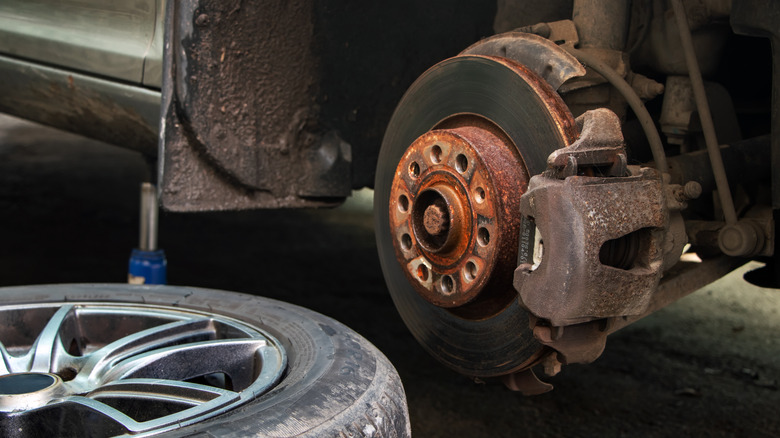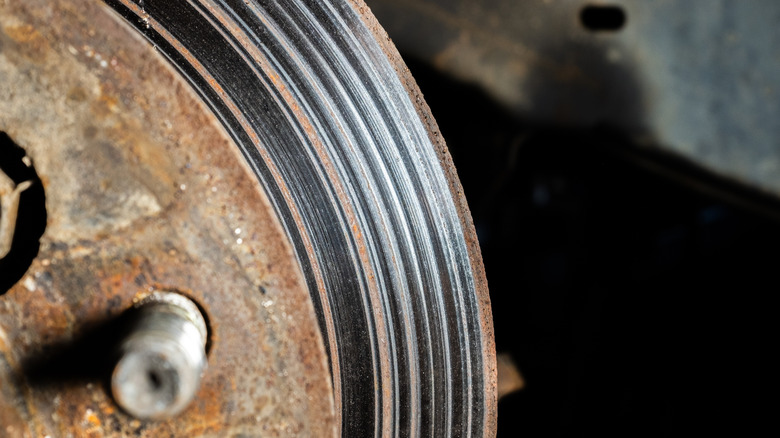What Are Brake Rotors And Why Do They Warp Or Fail?
The brake rotors are an important part of the disc brake system found in most modern cars. Many vehicles have disc brakes on the front and drum brakes in the rear, while others have four-wheel disc brakes. The "disc" part of the system is the brake rotor. These metal plates are sandwiched between the wheel and hub assemblies and spin along with them, held in place by the pressure and wheel lugs. Stepping on the brake pedal applies hydraulic pressure to the calipers, which grip the rotors via the brake pads, slowing the wheels and generating heat through friction. The brake pads are made of consumable materials like ceramics, graphite, or metals that wear out over time, and the rotors are usually made of cast iron or steel. Screeching or grinding noises and poor braking performance can be signs that brake pads need replacement, but the rotors need equal attention when you experience these symptoms.
Ideally, the brake pads will have a smooth surface to grip with uniform thickness, but heat softens the rotors and makes them uneven or "warped" with continued contact. Brake pads and rotors can reach 250º to 300°F under normal driving conditions, and will get more than twice that hot if you're driving aggressively. Even the tiniest variations in rotor thickness (as little as 2/1000ths of an inch) can affect your vehicle's braking feel and stopping power. Rotors that have developed grooves will show similar signs, and can mean you've neglected regular brake maintenance.
Brake rotors are easy to replace
Persistently driving with worn-out brake pads is a surefire way to damage your car's rotors. When the friction material of a brake pad wears out, the metal parts underneath will contact the rotor as you brake. This metal-to-metal contact will leave noticeable grooves in the rotor surface. When this happens, the rotor can be resurfaced by a machine shop or replaced entirely. Repeated panic braking maneuvers and riding the brakes while driving can also warp the rotors, and they can develop cracks over time from repeated heating and cooling.
A vibrating steering wheel, strange noises, or a pulsating pedal while braking can mean your rotors are warped or damaged. The good news is that replacing a pair of disc brake rotors should only cost around $60 to $150 per pair plus labor, and replacing brake pads and rotors is a job you can do yourself. You can avoid premature damage by replacing brake pads before they get too worn, not buying cheap brake pads, and driving carefuly to mitigate the need for panic braking.

